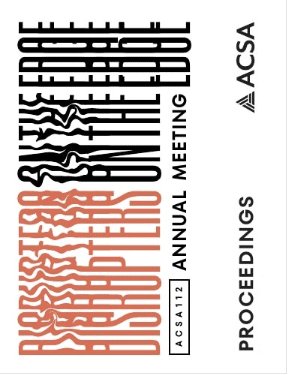Author(s): Michael Harpster & Sarah Karle
Contemporary discourse around mass timber tends to focus on the material’s ecological, formal, or technical significance and not on the unique role the material might play within an academic design studio. As mass timber continues to gain prominence within the built environment and within academic design studios, educators must develop a critical understanding of mass timber that extends beyond its sustainability and that considers the material’s role within design pedagogy and architectural education. This paper outlines a two-semester sequence of undergraduate design studios that attempts to do just that by introducing students to broader considerations of mass timber’s extraction, production, transportation, installation, and cultural reception within the built environment. Over the course of two successive design studies, students were given the opportunity to explore the technical as well as the formal and aesthetic possibilities of mass timber elements. With each semester providing unique geographic and programmatic contexts for student investigation, the two-studio sequence allowed students to gain a diverse understanding of the constraints and subsequent design possibilities for mass timber design. Throughout both semesters, students collaborated directly with structural engineers and mass timber fabricators and installers to gain a detailed understanding of the technical constraints and structural limitations of various mass timber systems, including one-way post and beam systems, two-way post and plate systems, and full CLT bearing wall systems. Ultimately, by participating in an extended studio sequence focused on the design and implementation of mass timber within the built environment, students developed the knowledge and skills necessary to operate with creativity and critical agency as they prepare to transition from an academic setting into professional practice. Exposing students to the regulatory, fabrication, transportation, and structural constraints of mass timber within a recursive learning environment empowered students to engage with these common constraints in informed and creative ways, extending their thinking beyond the passive reception of normative practices and toward broader, more critical interpretations of mass timber.
https://doi.org/10.35483/ACSA.AM.112.61
Volume Editors
Germane Barnes & Blair Satterfield
ISBN
978-1-944214-45-6

 Study Architecture
Study Architecture  ProPEL
ProPEL 
